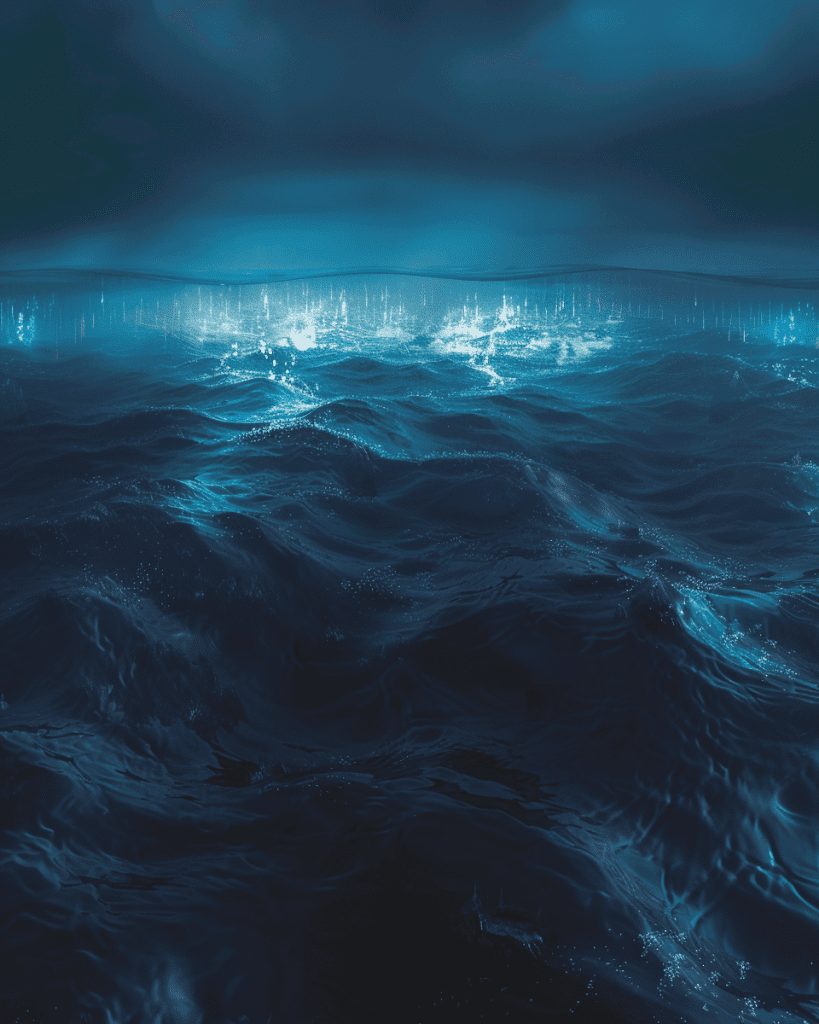In 1997, scientists detected a mysterious sound in the Pacific Ocean that captivated imaginations worldwide. This enigmatic noise, dubbed “the Bloop,” puzzled researchers for years. It was an ultra-low-frequency sound of surprising volume and range, picked up by hydrophones across vast distances.
The Bloop was ultimately identified as the sound of an icequake—a large iceberg breaking off from an Antarctic glacier. The National Oceanic and Atmospheric Administration (NOAA) provided this explanation, putting to rest years of speculation about giant sea monsters and unknown marine creatures.
The Bloop’s discovery showcases the fascinating world of underwater acoustics and the unexpected phenomena that occur in our oceans. It reminds us that even in the age of advanced technology, the sea still holds mysteries waiting to be revealed.
Discovery and Analysis
The Bloop, a mysterious underwater sound detected in 1997, sparked scientific intrigue and public fascination. Its discovery and subsequent analysis revealed surprising insights about oceanic acoustics and the challenges of identifying unknown marine phenomena.
Origin of the Name ‘Bloop’
The name “Bloop” originated from the onomatopoeic description of the sound when played at higher speeds. Scientists at the National Oceanic and Atmospheric Administration (NOAA) coined this playful term during their initial analysis of the acoustic data.
The nickname quickly gained popularity among researchers and the public. Its simplicity and catchiness contributed to the phenomenon’s widespread appeal and helped fuel speculation about its source.
Sound Characteristics
The Bloop exhibited several unique characteristics that set it apart from other known underwater sounds. It was an ultra-low frequency sound, far below the range of human hearing.
When sped up 16 times, it resembled a water droplet sound, hence its name. The sound lasted for about one minute and was powerful enough to be detected by multiple sensors across a vast distance.
Key features of the Bloop:
- Frequency: Ultra-low
- Duration: Approximately 60 seconds
- Intensity: Exceptionally loud
- Range: Detected over 3,000 km
Hydroacoustic Signal Detection
The Bloop was captured by the U.S. Navy’s Sound Surveillance System (SOSUS), a network of underwater hydrophones originally designed to detect Soviet submarines. This sophisticated system was repurposed for scientific research after the Cold War.
NOAA’s Pacific Marine Environmental Laboratory analyzed the data. Hydrophones located 5,000 km apart picked up the sound, highlighting its extraordinary intensity.
Researchers used spectrogram analysis to visualize the sound’s frequency components over time. This technique helped them compare the Bloop to other known underwater sounds and natural phenomena, aiding in the eventual identification of its source.
Theories and Resolution
The mysterious underwater sound known as “The Bloop” sparked numerous theories and scientific investigations. Its eventual resolution revealed surprising insights about our oceans and the power of natural phenomena.
Initial Speculations
When the Bloop was first recorded in 1997, it captivated both scientists and the public. The sound’s immense volume and low frequency led to some intriguing hypotheses.
Many speculated it could be a new, undiscovered sea creature. Some even suggested it might be evidence of a massive unknown animal, like a giant squid or a previously undocumented whale species.
Others proposed more mundane explanations, such as military exercises or ships. The sound’s unusual characteristics fueled imaginations and debates among researchers and enthusiasts alike.
Scientific Investigations
Scientists embarked on a thorough investigation to unravel the Bloop mystery. They analyzed the sound’s characteristics, including its frequency, duration, and propagation patterns.
Researchers used sophisticated underwater monitoring equipment to track similar sounds and pinpoint their origins. They compared the Bloop to known natural phenomena and animal vocalizations.
The investigation spanned nearly a decade, involving multiple scientific institutions and agencies. Underwater listening stations across the Pacific played a crucial role in gathering data and narrowing down potential sources.
Conclusion: Natural Phenomenon
After years of study, scientists finally solved the Bloop mystery. The sound was determined to be an icequake – the cracking and breaking of a large Antarctic iceberg.
This conclusion came as a surprise to many who had hoped for a more exotic explanation. However, it highlighted the immense power of natural ice movements in the polar regions.
The resolution of the Bloop mystery demonstrated the importance of scientific rigor and patience in unraveling oceanic enigmas. It also underscored how much we still have to learn about the vast, mysterious world beneath the waves.

